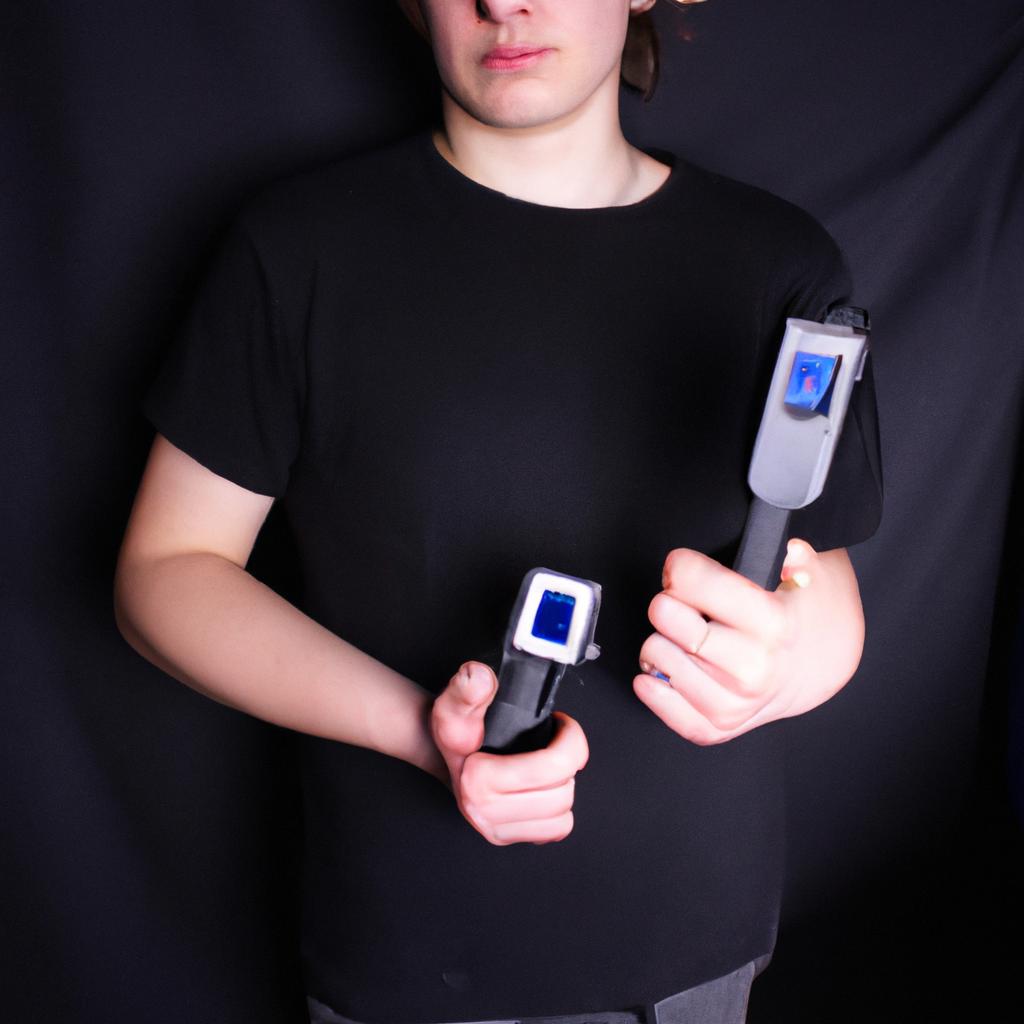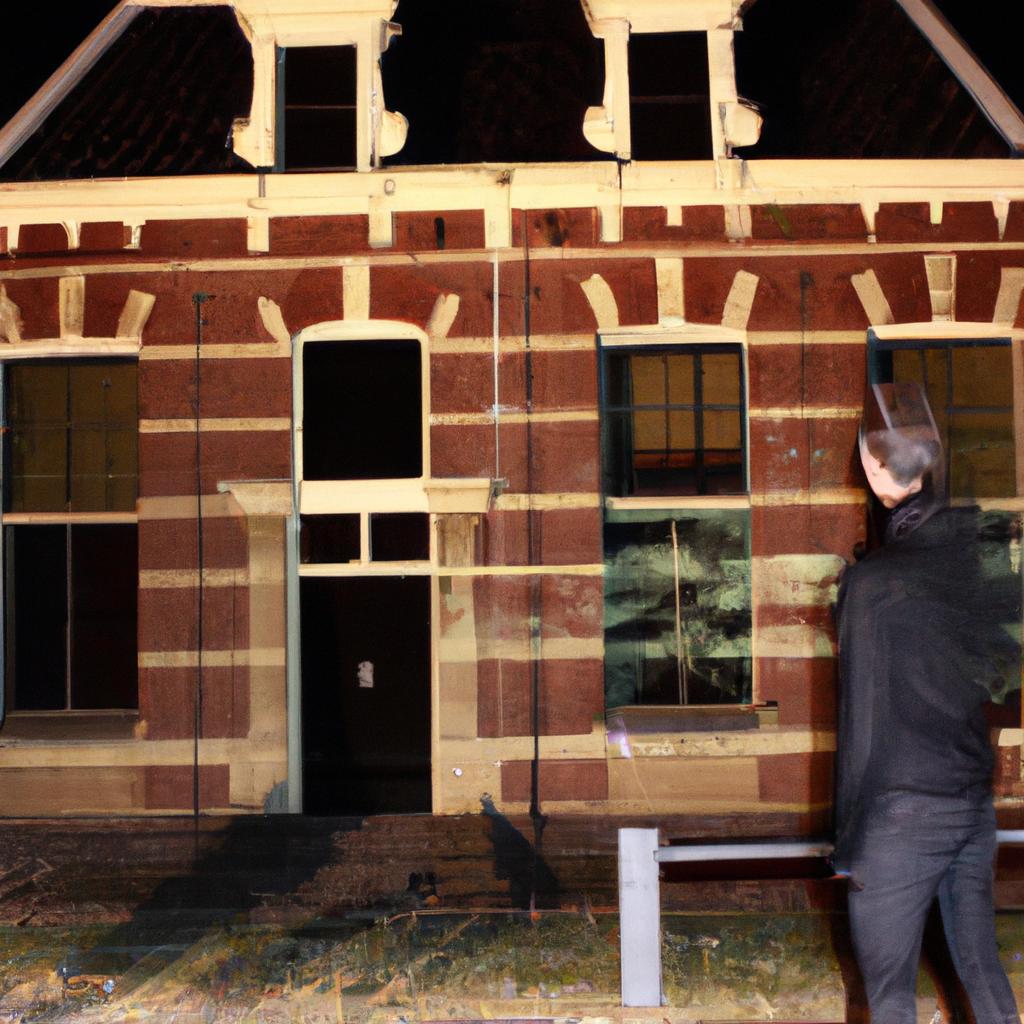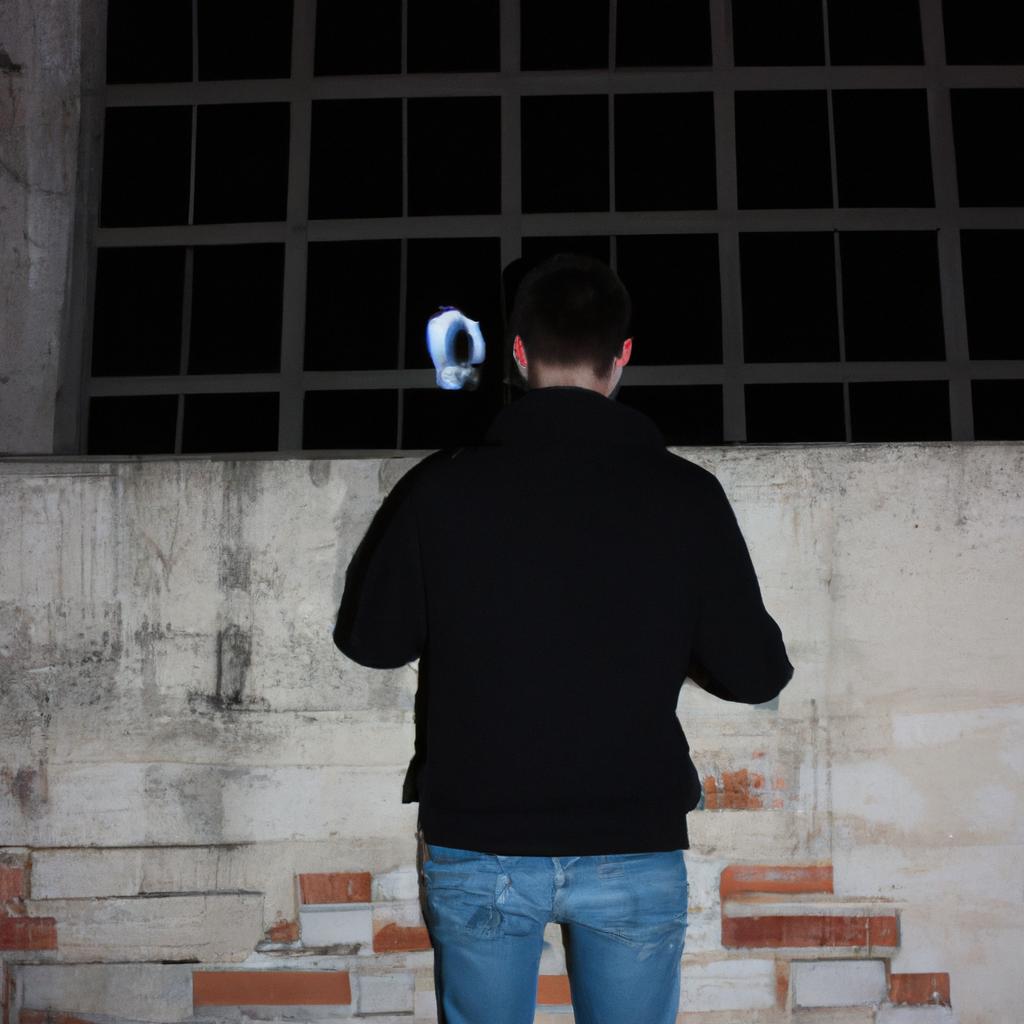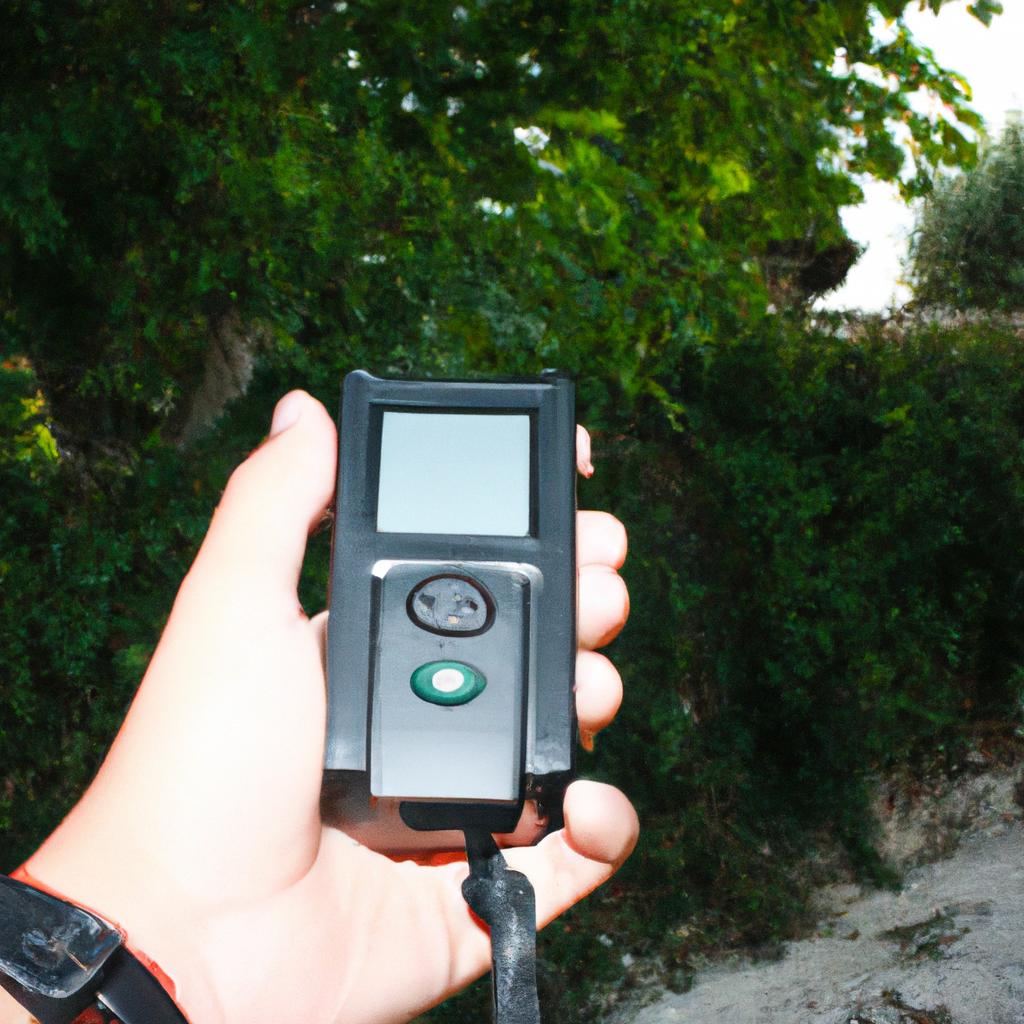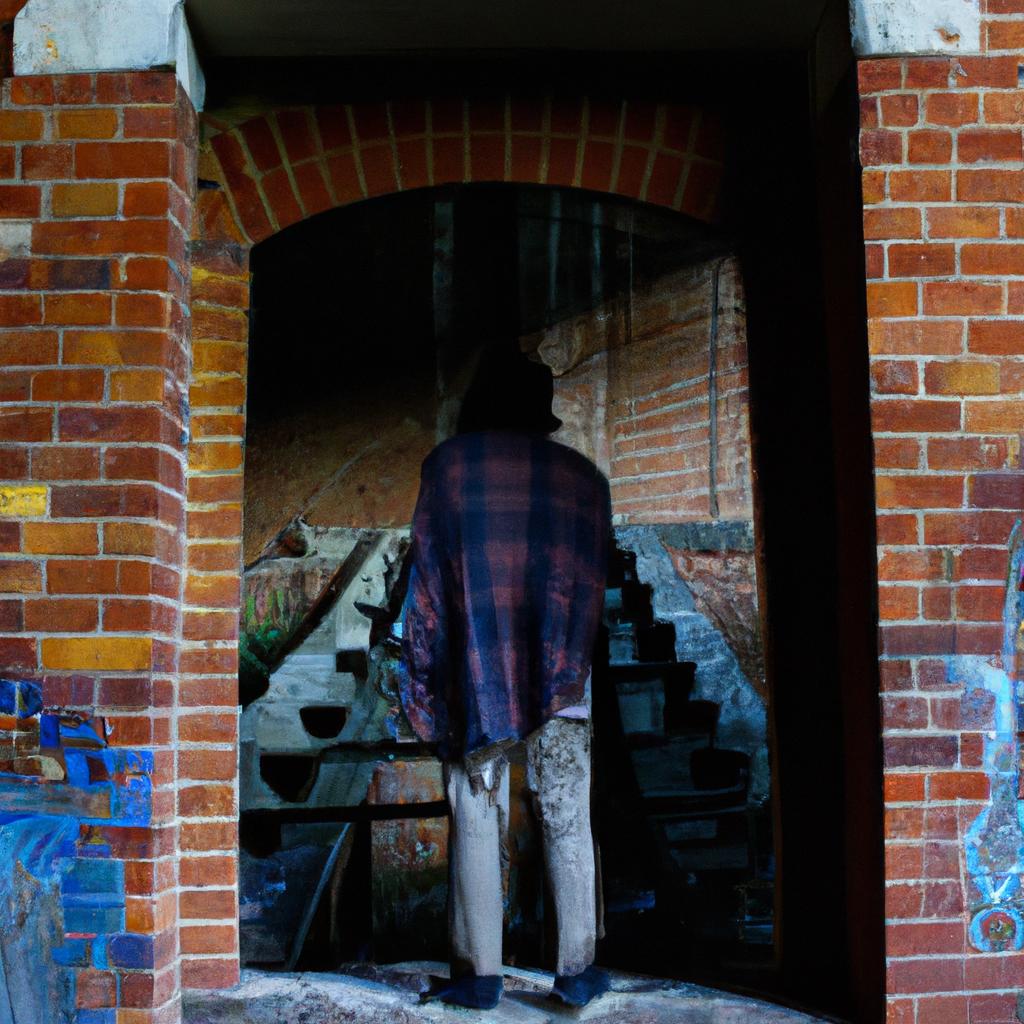Apparitions Uncovered: Ghostly Encounters in the Realm of the Paranormal
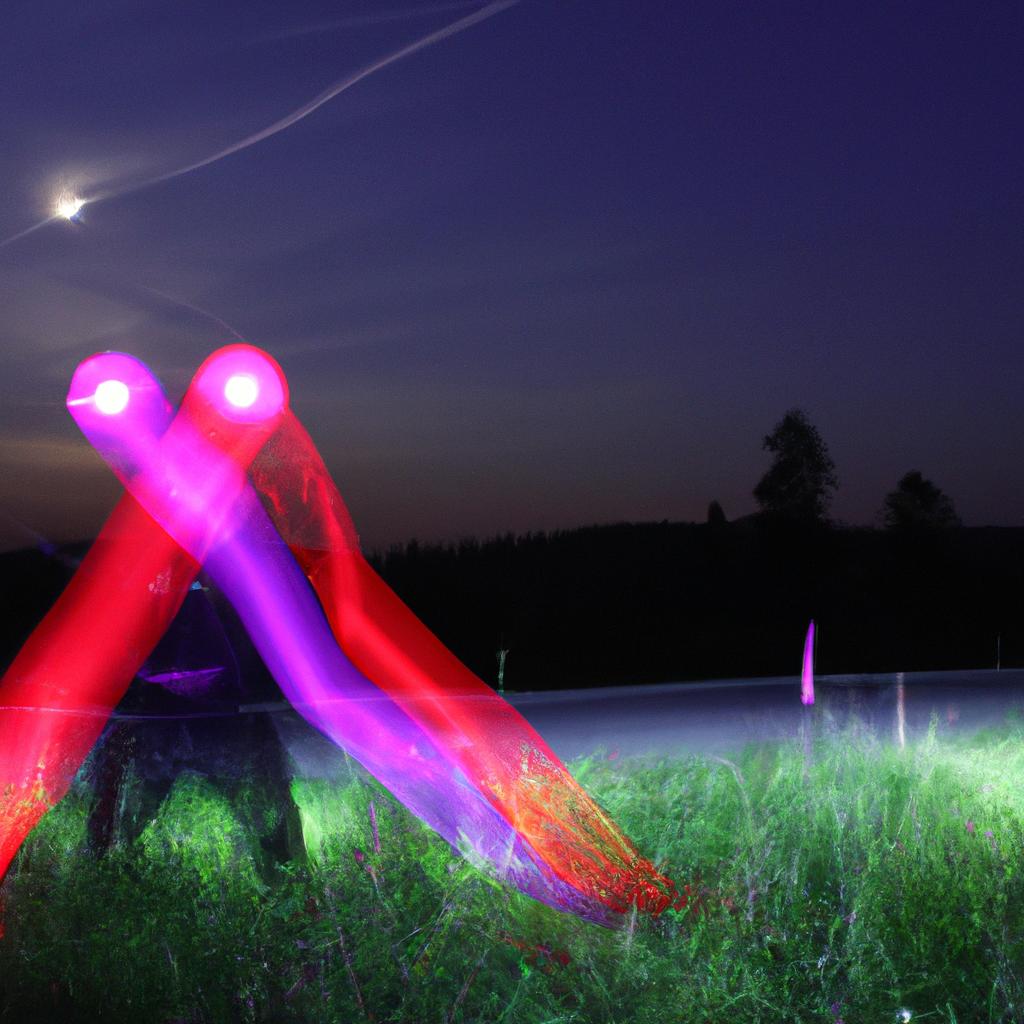
The realm of the paranormal has long held a fascination for individuals seeking answers about the mysteries of existence beyond our physical world. Amongst these enigmatic phenomena, one particular aspect that continues to captivate both believers and skeptics alike is the concept of apparitions or ghostly encounters. These ethereal manifestations have been reported throughout history across various cultures and societies, leaving many to wonder if there is indeed an existence beyond death. To shed light on this intriguing topic, this article delves into the world of apparitions, uncovering their origins, characteristics, and potential explanations.
One compelling example that demonstrates the enduring allure of apparitions can be found in the case study of Emily Wilson, a resident from a small town in England. In 1987, Emily claimed to have encountered the spirit of her deceased grandmother while visiting her childhood home during a family reunion. According to Emily’s account, she suddenly felt a chill in the air as she entered her grandmother’s old bedroom which had remained untouched since her passing several years prior. As she approached an ornate mirror hanging on the wall, Emily was startled by what appeared to be a faint reflection of her grandmother standing beside her own image. This vivid encounter left Emily questioning the boundaries between life and death and ignited an insatiable curiosity to explore the world of apparitions further.
The concept of apparitions or ghostly encounters dates back centuries and can be found in folklore, religious texts, and historical accounts from around the world. These ethereal manifestations are often described as translucent or shadowy figures, sometimes appearing solid enough to interact with their surroundings. While skeptics attribute such experiences to psychological factors or optical illusions, believers argue that these encounters provide evidence of an afterlife or a spiritual realm.
There are several theories attempting to explain the phenomenon of apparitions. One common belief is that they are the spirits or souls of deceased individuals who have not yet moved on from the physical plane. According to this theory, apparitions may appear for various reasons, such as unfinished business, unresolved emotions, or a desire to communicate with loved ones left behind.
Another explanation suggests that apparitions could be residual energy imprints left behind by past events or intense emotions. This theory posits that certain locations may retain energetic imprints from traumatic incidents or emotional experiences, which can manifest as ghostly apparitions replaying those moments.
Additionally, some researchers propose that apparitions could be a manifestation of collective consciousness or mass hallucinations. They argue that when a group of people believes in the existence of ghosts or expects to encounter them in a particular location, their combined thoughts and beliefs create a shared experience.
Despite ongoing debates and scientific skepticism surrounding the reality of apparitions, these phenomena continue to captivate our imaginations and inspire exploration into the mysteries beyond our understanding. Whether they are glimpses into an afterlife, remnants of past energies, products of human psychology, or something else entirely – the allure and fascination with ghostly encounters will likely persist for generations to come.
The History of Apparitions
Apparitions, or ghostly encounters, have captivated human imagination throughout history. These spectral manifestations have been reported in various cultures and across different time periods, leaving a lasting impact on society’s beliefs and perceptions of the supernatural. To illustrate the significance of these phenomena, let us delve into one particular haunting case study—the infamous Grey Lady of Hampton Court Palace.
Hampton Court Palace, located in England, has long been associated with tales of paranormal activity. One such account involves sightings of the Grey Lady—a specter believed to be that of Sybil Penn, a former servant who died under mysterious circumstances in the 16th century. Witnesses claim to have seen her apparition wandering through the palace corridors late at night, her ethereal figure draped in a gray gown. This chilling example serves as an introduction to explore the broader historical context surrounding apparitional experiences.
Throughout history, individuals from all walks of life have reported encounters with apparitions. From ancient civilizations to modern societies, stories abound regarding these otherworldly visitations. The reasons behind these encounters vary greatly—ranging from unfinished business or unresolved emotions tying spirits to specific locations, to spiritual remnants left behind by traumatic events or tragedies. Such occurrences continue to intrigue both skeptics and believers alike.
To further understand the rich tapestry of apparitional experiences throughout history, it is helpful to examine some common themes associated with ghostly encounters:
- Fear and Terror: Many accounts describe feelings of fear and terror when encountering an apparition.
- Curiosity and Fascination: Some individuals are intrigued rather than frightened by their ghostly experiences.
- Emotional Resonance: Apparitions often evoke strong emotional responses in witnesses due to their association with departed loved ones or tragic events.
- Spiritual Beliefs: Ghostly encounters frequently intersect with religious or spiritual beliefs regarding the afterlife and existence beyond death.
In addition to exploring these emotional aspects of apparitions, a closer examination of historical records reveals patterns and classifications. Below is an illustrative table highlighting different types of ghostly encounters reported throughout history:
| Type of Ghostly Encounter | Description |
|---|---|
| Residual Haunting | Repetitive manifestations lacking awareness or interaction with the living. Examples include residual energy imprinted on a location after traumatic events. |
| Intelligent Haunting | Apparitions that display consciousness and interact with the living through various means like moving objects, voices, or physical touch. |
| Poltergeist Activity | Noisy disturbances characterized by objects being thrown or moved seemingly without any visible force present. Often associated with adolescent individuals experiencing emotional turmoil. |
| Crisis Apparitions | Sudden appearances of deceased loved ones during times of crisis or impending death, offering comfort or guidance to those in distress. |
By examining these categories and their accompanying characteristics, researchers have been able to gain further insight into the nature and intricacies of ghostly encounters.
As we transition into exploring Types of Ghostly Encounters in more detail, it becomes apparent that the Grey Lady’s haunting at Hampton Court Palace represents just one facet of a phenomenon deeply embedded within human history, culture, and belief systems. Understanding this rich tapestry allows for a broader exploration of the diverse experiences people have reported when encountering apparitions across time and place.
[Types of Ghostly Encounters]
Types of Ghostly Encounters
Apparitions Uncovered: Ghostly Encounters in the Realm of the Paranormal
H2: The History of Apparitions
From ancient times to modern-day, tales of ghostly encounters have captivated our imaginations and sparked curiosity about what lies beyond the veil. As we delve deeper into the realm of the paranormal, it becomes evident that there are various types of ghostly encounters that individuals claim to have experienced. These encounters range from benign sightings to more intense interactions with apparitions. In this section, we will explore some common types of ghostly encounters.
One example of a ghostly encounter is the classic “haunting” phenomenon. Often associated with specific locations, hauntings involve repeated sightings or experiences involving spirits or apparitions within a certain space. For instance, consider an abandoned Victorian mansion rumored to be haunted by a young girl who tragically passed away many years ago. Visitors report hearing her laughter echoing through empty hallways and catching glimpses of her ethereal figure standing near broken windows.
To further understand the breadth and depth of these experiences, let us examine some emotional responses often associated with ghostly encounters:
- Fear: Many people feel a sense of fear when encountering apparitions due to their association with death and unknown forces.
- Curiosity: Some individuals experience a strong desire to investigate and learn more about these phenomena, driven by their fascination with the supernatural.
- Awe: Witnessing something beyond conventional understanding can evoke feelings of awe and wonder at the mysteries surrounding life and death.
- Comfort: Interestingly enough, certain encounters provide solace for those seeking reassurance that departed loved ones still exist in some form.
Table – Emotional Responses:
| Emotions | Description |
|---|---|
| Fear | An overwhelming sense of dread or unease linked to encountering otherworldly entities |
| Curiosity | Intense interest aroused by strange occurrences and the desire to uncover their truth |
| Awe | A deep sense of wonder and astonishment at witnessing something beyond explanation |
| Comfort | Feelings of solace or reassurance brought about by encounters with departed spirits |
As we continue our exploration, it is important to note that everyone’s experiences are unique, influenced by personal beliefs, cultural backgrounds, and psychological factors. The nature of these encounters remains enigmatic and subject to interpretation.
Transitioning into the subsequent section on “Famous Haunted Locations,” we will delve into some renowned places where ghostly encounters have become part of their rich histories. Through examining these locations, we hope to shed light on the enduring fascination with apparitions in specific settings.
Famous Haunted Locations
Apparitions Uncovered: Ghostly Encounters in the Realm of the Paranormal
Types of Ghostly Encounters Explored
Now, let us further explore this intriguing subject and examine some specific instances that shed light on the nature of such encounters.
Imagine a dimly lit Victorian-era mansion nestled deep within an isolated forest. It is said to be haunted by the ghost of a woman dressed in white, forever wandering its hallways. This haunting tale serves as an example of what many refer to as a residual haunting—a phenomenon where apparitions seem to replay certain actions or events from their past lives without any interaction with the living.
- Intelligent Hauntings: These are interactions between spirits and humans where the entity demonstrates awareness and intentionality.
- Poltergeist Activity: Characterized by mischievous behavior such as object manipulation or unexplained noises, often associated with emotional turmoil.
- Shadow Figures: Dark silhouettes glimpsed out of the corner of one’s eye—mysterious entities lurking just beyond reach.
- Apparitions: Full-bodied manifestations that appear vividly before witnesses, sometimes capable of communication.
Now, let us turn our attention to a table that presents four notable cases showcasing distinct aspects of supernatural experiences:
| Case | Location | Phenomena Observed | Witnesses |
|---|---|---|---|
| The Bell Witch | Adams, Tennessee | Physical attacks, disembodied voices | John Bell Sr., family members |
| The Tower Light | London | Eerie glow emanating from tower windows | Local residents |
| The Brown Lady | Raynham Hall, England | Ghostly apparition captured in a photograph | Captain Hubert C. Provand, Indre Shira |
| The Myrtles | St. Francisville, LA | Haunted plantation with numerous ghostly encounters | Visitors and staff |
These captivating examples illustrate the diversity of paranormal phenomena experienced by individuals across different locations and time periods.
Scientific Theories on Apparitions
As we delve deeper into the realm of ghostly encounters, it is essential to consider scientific theories that attempt to explain these perplexing occurrences. By examining various hypotheses put forth by researchers and scholars, we can gain valuable insights into this mysterious field.
[Transition sentence for subsequent section: Scientific Theories on Apparitions]
End of section.
Scientific Theories on Apparitions
Uncovering the mysteries of the paranormal world, one cannot help but delve into the realm of scientific theories on apparitions. While countless individuals have experienced ghostly encounters throughout history, scientists and researchers have sought to explain these phenomena through various lenses. By examining factors such as psychology, physics, and neurology, a clearer understanding of these unexplained occurrences begins to emerge.
To illustrate the complexity surrounding this topic, let us consider an example: The Case of Hill House. Located in a small town nestled deep within a thick forest, Hill House has long been rumored to be haunted by restless spirits. Visitors claim to hear disembodied voices echoing through its desolate halls and feel inexplicable drops in temperature when entering certain rooms. However, despite numerous investigations conducted by renowned paranormal experts, no tangible evidence has ever been found to support these claims.
When exploring scientific explanations for ghostly encounters, several key points come to light:
- Perception and Suggestion: Our perception can often be influenced by suggestion or preconceived notions about haunted locations. This phenomenon is known as “top-down processing,” where our brains fill in gaps based on expectations rather than actual sensory input.
- Electromagnetic Fields: Some researchers believe that fluctuations in electromagnetic fields can lead to hallucinations or feelings of unease commonly associated with hauntings. These disturbances may result from natural sources like underground water veins or man-made devices emitting electromagnetic radiation.
- Sleep Paralysis: Sleep paralysis occurs when a person wakes up during REM sleep and finds themselves temporarily unable to move or speak. Many who experience sleep paralysis report seeing shadowy figures or sensing a malevolent presence in their room—a sensation that closely resembles traditional ghostly encounters.
- Collective Consciousness: In certain instances, multiple people simultaneously experience ghostly phenomena at a specific location. This shared encounter suggests the possibility of collective consciousness influencing perceptions and experiences.
To further emphasize these points, see the table below highlighting different factors contributing to ghostly encounters:
| Factors | Influence on Ghostly Encounters |
|---|---|
| Psychological | Perception and suggestion |
| Physiological | Electromagnetic fields |
| Sleep-related | Sleep paralysis |
| Sociocultural | Collective consciousness |
As we continue our exploration into the scientific theories surrounding apparitions, it becomes evident that these explanations offer potential insights into the nature of ghostly encounters. By unraveling the psychological and physiological aspects at play, researchers strive for a more comprehensive understanding of these phenomena. In turn, this knowledge opens doors to further investigation and new avenues for exploring the unexplained.
Transitioning seamlessly from the examination of scientific theories, our journey now leads us to explore another intriguing aspect: Psychological Explanations for Ghostly Encounters.
Psychological Explanations for Ghostly Encounters
Section H2: Psychological Explanations for Ghostly Encounters
Transitioning from the scientific theories on apparitions, it is important to delve into the psychological explanations that attempt to shed light on ghostly encounters. While these explanations may not provide concrete evidence of paranormal activity, they offer valuable insights into the human mind and its propensity for creating supernatural experiences.
One example of a psychological explanation is the concept of pareidolia, which refers to the tendency of humans to perceive meaningful patterns or shapes in random stimuli. For instance, when someone sees a face in the clouds or detects familiar shapes in inkblots, it is likely due to this cognitive phenomenon. In the context of ghostly encounters, pareidolia could explain why individuals report seeing apparitions or figures in dimly lit rooms or shadowy corners.
Furthermore, suggestibility plays a significant role in shaping our perception of reality. When individuals are exposed to stories about ghosts or paranormal phenomena, their minds become primed to interpret ambiguous stimuli as signs of otherworldly presence. This can lead them to attribute unusual occurrences such as creaking sounds or flickering lights to supernatural entities rather than natural causes.
To further explore the psychological aspects behind ghostly encounters, consider the following emotional responses often associated with paranormal experiences:
- Fear: The fear experienced during an encounter with a ghostly figure can be overwhelming and intense.
- Intrigue: People who have had ghostly encounters often find themselves captivated by the mystery surrounding such phenomena.
- Comfort: Some individuals believe that encountering a deceased loved one provides solace and reassurance about an afterlife.
- Awe: Witnessing something unexplainable can evoke feelings of wonderment and awe.
| Emotion | Description |
|---|---|
| Fear | Overwhelming sense of dread and unease |
| Intrigue | Fascination and curiosity towards the unknown |
| Comfort | A feeling of solace and reassurance |
| Awe | Overwhelming wonderment and astonishment |
In conclusion, psychological explanations offer compelling insights into the human mind’s propensity to create supernatural experiences. The concepts of pareidolia and suggestibility shed light on how individuals may interpret ambiguous stimuli as ghostly encounters. Moreover, understanding the emotional responses associated with paranormal phenomena can help explain why people are drawn to these experiences. By exploring these psychological aspects, we gain a deeper understanding of the intricate link between our minds and the realm of the paranormal.
Transitioning into the subsequent section about “Tips for Investigating Paranormal Activity,” it is essential to equip ourselves with knowledge and tools that will aid in unraveling the mysteries surrounding ghostly encounters.
Tips for Investigating Paranormal Activity
Exploring the Unseen: Investigating Paranormal Activity
As we delve further into the realm of paranormal encounters, it becomes essential to equip ourselves with practical tips for investigating such phenomena. These techniques can help us approach ghostly encounters with a more critical and scientific mindset, allowing us to uncover possible explanations or gather evidence that supports supernatural claims.
To illustrate the effectiveness of these investigative methods, let’s consider a hypothetical case study involving a purported haunted house. The residents claim to have experienced various unexplained occurrences, including disembodied voices, objects moving on their own, and shadowy figures lurking in the corners of their vision. By employing diligent investigation techniques, we can shed light on whether these experiences are indeed otherworldly or if there might be alternative explanations at play.
When embarking on an investigation into paranormal activity, here are some key points to keep in mind:
- Document your findings: Maintain a detailed logbook where you record all observations and experiences during each visit. Include information such as date, time, location within the property, weather conditions, and any relevant environmental factors.
- Utilize technology: Equip yourself with tools like electromagnetic field (EMF) detectors and digital voice recorders to capture potential anomalies that may not be immediately perceptible to human senses.
- Conduct interviews: Engage in thorough conversations with witnesses to gain deeper insights into their experiences. Ask open-ended questions while remaining objective to ensure accurate accounts.
- Collaborate with experts: Seek guidance from professionals specializing in parapsychology or related fields who can offer valuable insights based on their expertise.
By following these investigative guidelines consistently throughout our exploration of alleged hauntings or paranormal events, we allow ourselves the opportunity to analyze each situation methodically without jumping prematurely to supernatural conclusions.
| Investigation Techniques | Purpose | Equipment Needed |
|---|---|---|
| EVP Sessions | Capturing electronic voice phenomenon | Digital voice recorder |
| EMF Readings | Detecting electromagnetic field fluctuations | EMF detector |
| Infrared Photography | Identifying temperature variations | Infrared camera |
| Historical Research | Uncovering relevant background information | Archival resources |
By employing these methods and equipment, investigators can approach paranormal phenomena with a sense of objectivity while gathering data that contributes to the wider understanding of such encounters. Remember, it is through diligent investigation and critical thinking that we truly uncover the truth behind ghostly apparitions.
Incorporating scientific principles into our exploration allows us to unravel the mysteries surrounding paranormal experiences. By maintaining an open mind, documenting findings diligently, utilizing appropriate tools and collaborating with experts, we can navigate this realm with the utmost professionalism and integrity. Only then will we be able to separate fact from fiction in the fascinating world of the supernatural.

